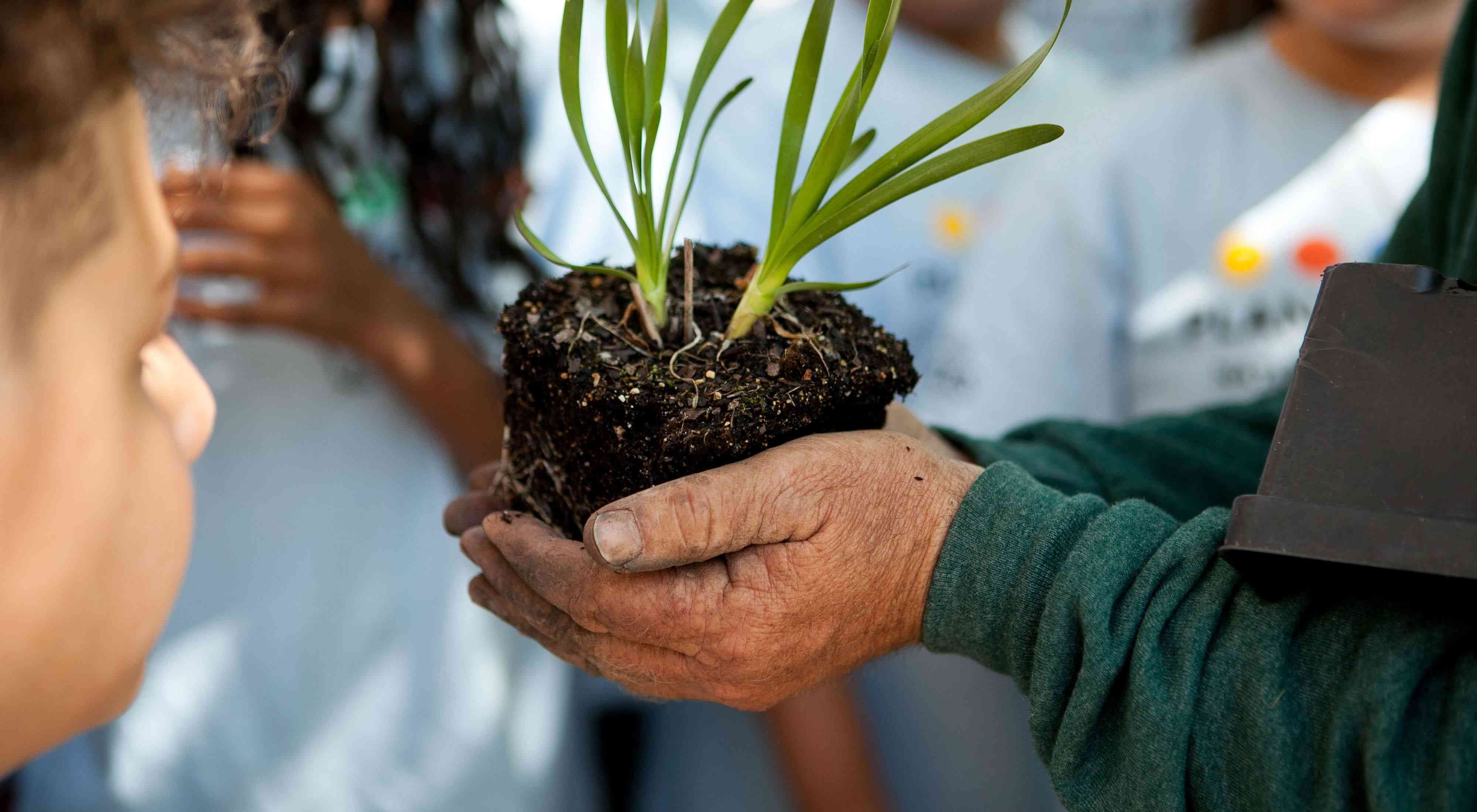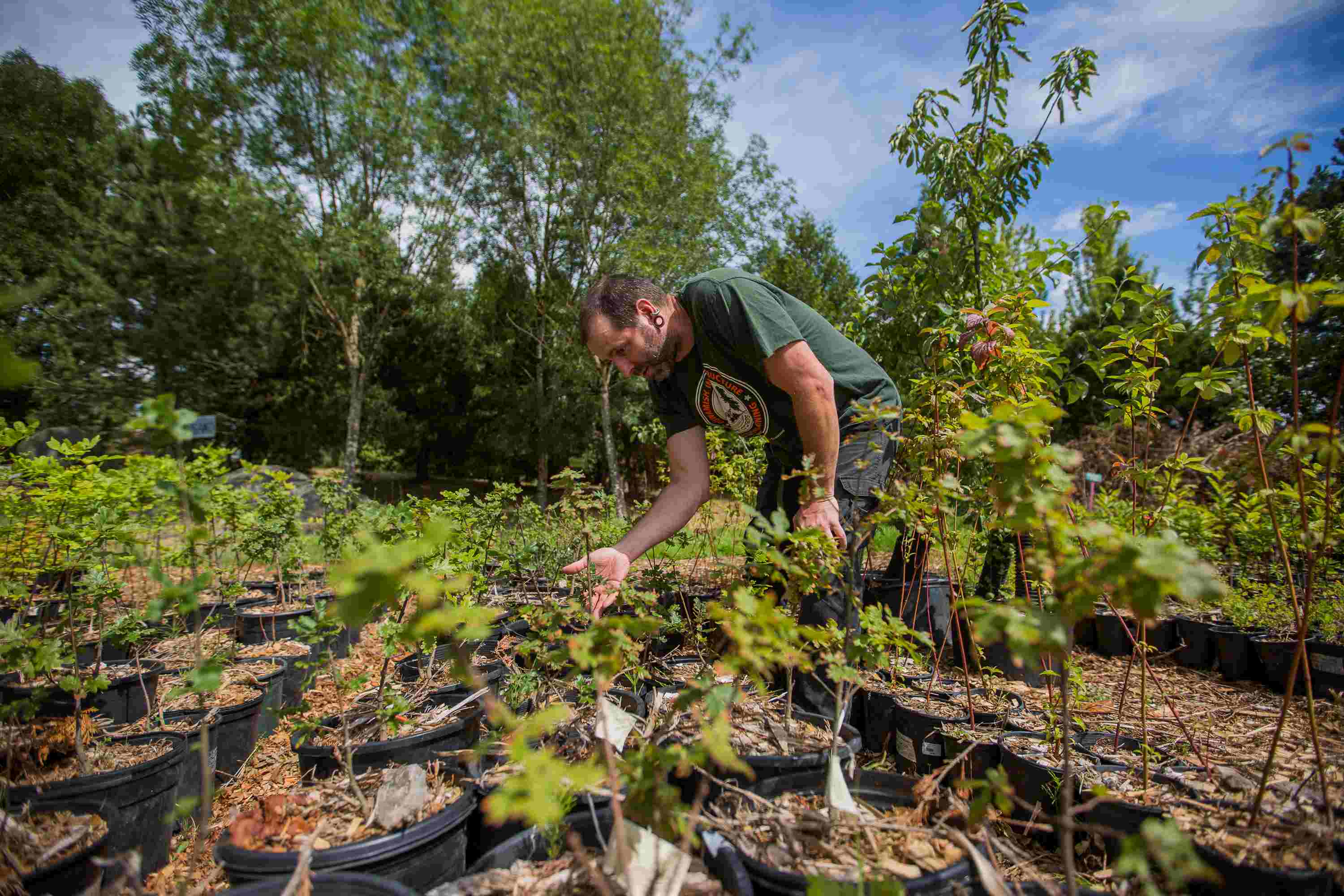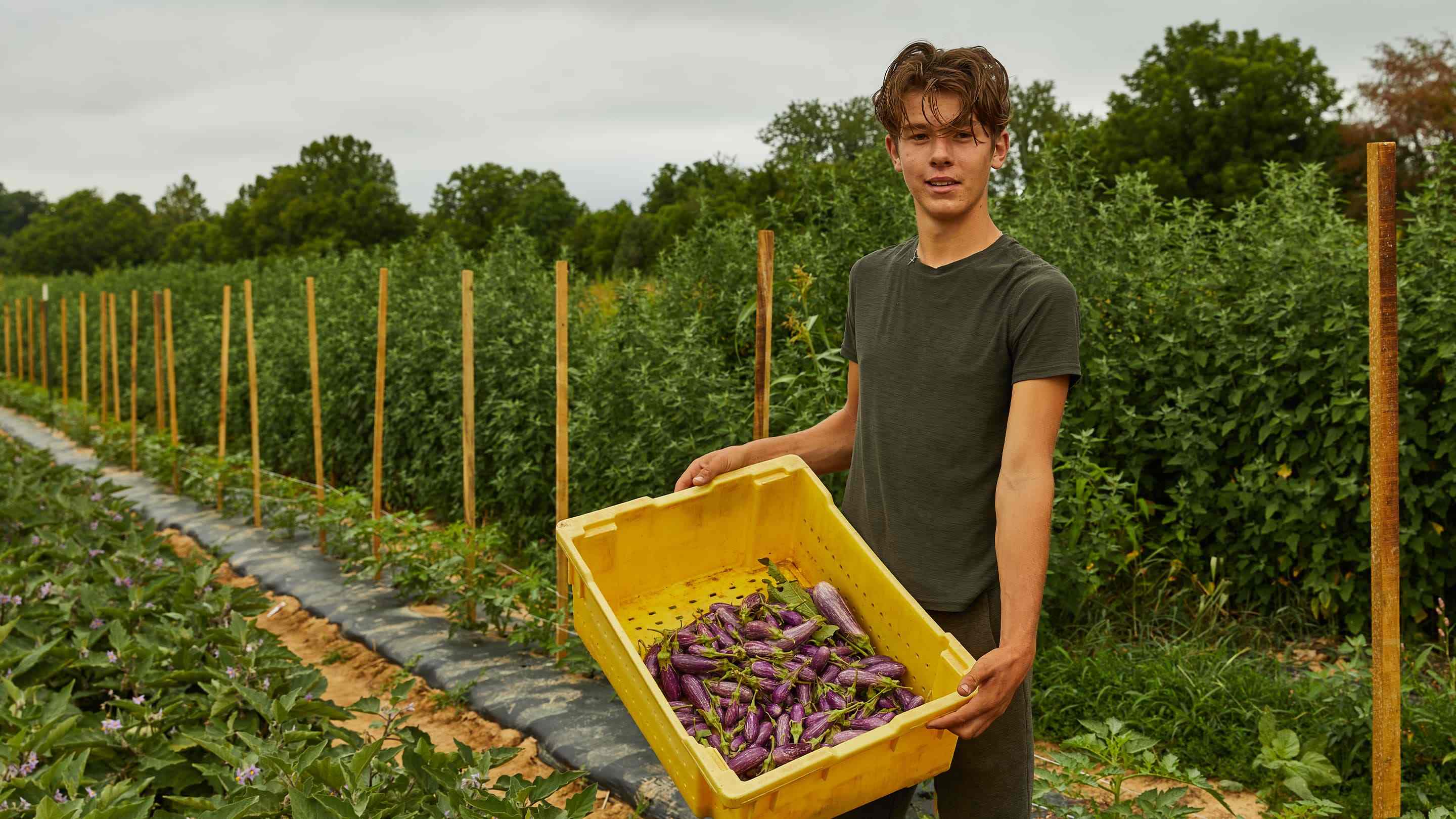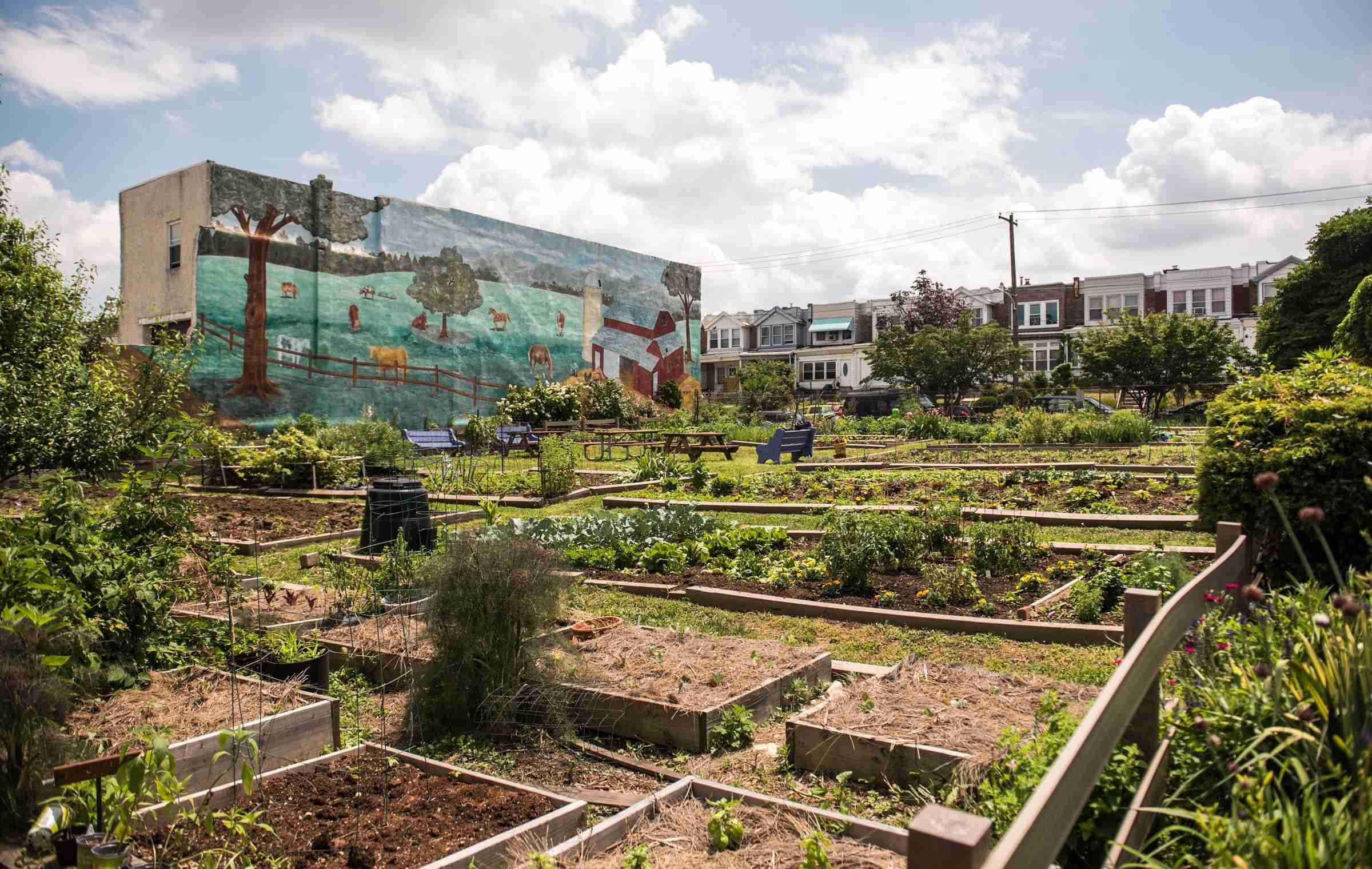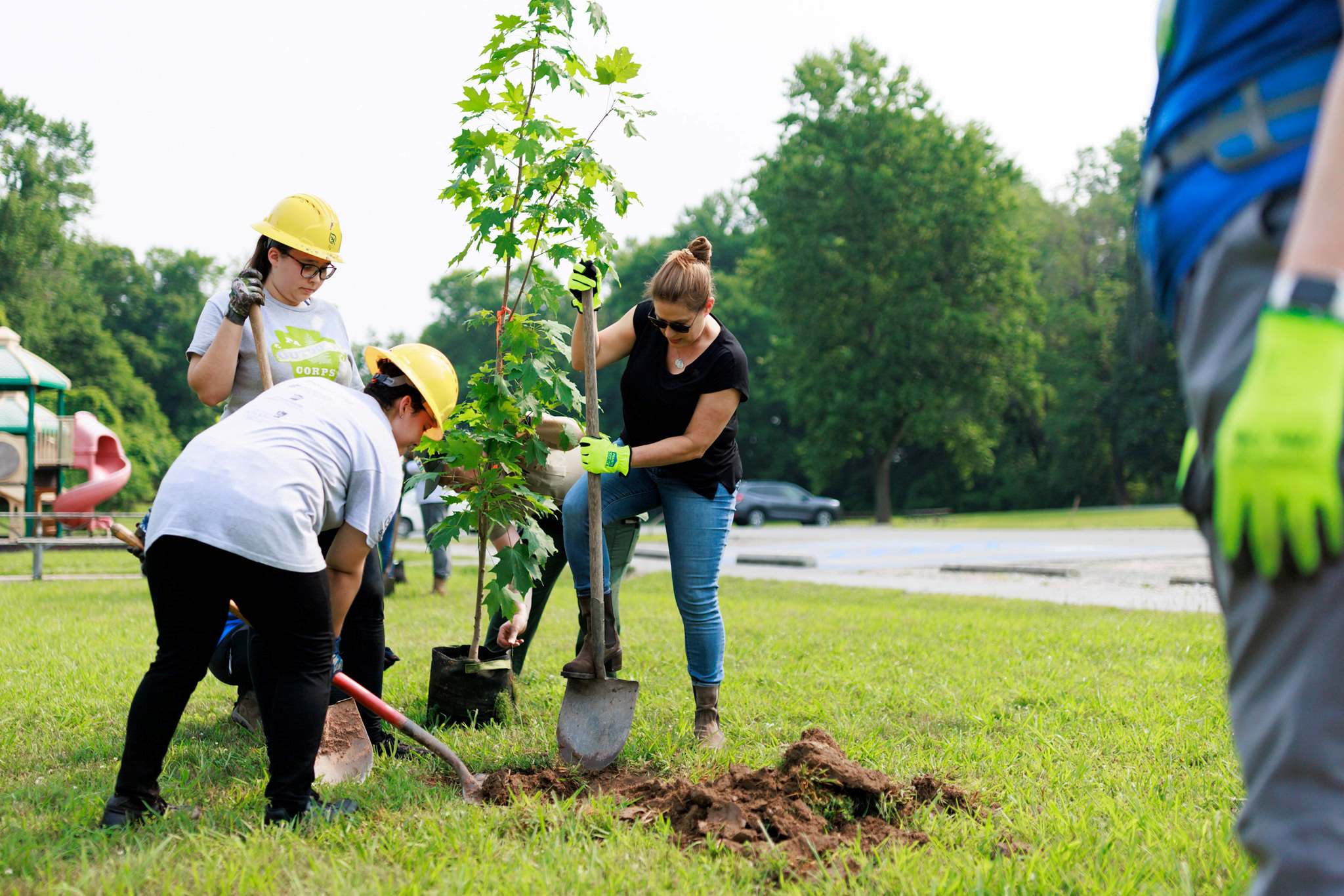Home>Gardening Basics>Understanding Soil>What Are The Planting Zones


Understanding Soil
What Are The Planting Zones
Modified: January 22, 2024
Learn how understanding soil can help you determine the appropriate planting zones for your garden. Get tips and insights on gardening based on soil types.
(Many of the links in this article redirect to a specific reviewed product. Your purchase of these products through affiliate links helps to generate commission for Chicagolandgardening.com, at no extra cost. Learn more)
Table of Contents
- Introduction
- Understanding Planting Zones
- Factors Affecting Planting Zones
- How Planting Zones are Determined
- Planting Zone Map
- Importance of Planting Zones
- Growing Suitable Plants in Different Zones
- Strategies for Successful Gardening in Various Zones
- Maintenance and Care Tips for Different Planting Zones
- Conclusion
Introduction
Understanding soil is essential for successful gardening and agricultural practices. Soil is a complex ecosystem consisting of minerals, organic matter, water, air, and numerous microorganisms. It plays a crucial role in providing nutrients, supporting plant growth, and regulating water and nutrient availability. Having a comprehensive understanding of soil properties and characteristics allows gardeners, farmers, and landowners to make informed decisions and implement appropriate management practices for optimal plant growth and productivity.
Soil is not a static entity; it varies in composition, texture, fertility, and pH levels across different regions and even within a single garden. These variations determine the suitability of soil for specific plants, and being aware of these differences can significantly impact gardening success. This is where the concept of planting zones comes into play.
Planting zones, also known as hardiness zones or growing zones, categorize regions based on their climate, temperature extremes, and average annual minimum temperatures. The United States Department of Agriculture (USDA) developed the most commonly used system, known as the USDA Hardiness Zone Map. This map divides North America into 13 zones, each representing a range of average minimum winter temperatures. Zones range from 1 (coldest) to 13 (warmest).
By understanding the planting zones in your region, you can determine what plants are most likely to thrive and survive the local climate conditions. This knowledge helps in selecting the right plants for your garden, ensuring they can withstand the temperatures, humidity levels, and other environmental factors specific to your area.
In this article, we will delve deeper into the concept of planting zones, explore how they are determined, and discuss their importance in gardening and agricultural practices. We will also provide strategies and tips for successful gardening in different planting zones, enabling you to make the most of your gardening efforts and create a thriving, beautiful garden.
Understanding Planting Zones
Planting zones, also referred to as hardiness zones, are geographical regions that help gardeners and farmers determine the suitability of specific plants based on climate conditions. These zones provide valuable information about the average minimum temperatures experienced in a particular area, enabling gardeners to select plants that are likely to thrive in their local environment.
Each planting zone is characterized by a range of average minimum winter temperatures. The United States Department of Agriculture (USDA) developed the widely used USDA Hardiness Zone Map, which divides North America into 13 zones. Zone 1 represents the coldest areas with average minimum temperatures below -50°F (-45.6°C), while Zone 13 represents the warmest regions with average minimum temperatures above 60°F (15.6°C).
Understanding planting zones is crucial because plants have specific temperature requirements for proper growth and development. Some plants are more tolerant of cold temperatures and can withstand frost and chilly climates, while others thrive in warm, tropical conditions. By knowing which planting zone you are in, you can select plants that are well-suited to your environment and have a higher chance of surviving and thriving.
In addition to minimum temperature ranges, planting zones may also take into account other climate factors such as the length of the growing season, rainfall patterns, humidity levels, and wind conditions. These factors further influence the success of plants in a particular region.
It’s important to note that planting zones are not the only factor to consider in gardening. Other variables like soil type, drainage, sunlight exposure, and altitude also play a significant role in determining plant success. However, understanding your planting zone provides a fundamental starting point for selecting suitable plants and making informed gardening decisions.
It’s worth mentioning that planting zones are not static and may change over time due to climate variations. Factors like global warming and climate change can gradually shift the boundaries of planting zones, impacting plant selection and gardening practices. Therefore, it’s essential to stay informed about any updates or changes to planting zones in your area.
In the next section, we will explore the factors that affect planting zones in more detail, providing a deeper understanding of the complexities involved in determining suitable plants for specific regions.
Factors Affecting Planting Zones
Several key factors influence the formation and boundaries of planting zones. Understanding these factors can help gardeners and farmers adapt to changing climates and make informed decisions about plant selection and cultivation practices. Here are some of the most significant factors affecting planting zones:
- Temperature Extremes: The primary factor influencing planting zones is the average minimum temperature experienced in a region. Areas with colder winter temperatures will have lower zone numbers, indicating plants that are more cold-tolerant. Conversely, warmer regions with milder winters will have higher zone numbers.
- Elevation and Altitude: Higher elevations generally experience cooler temperatures, which can affect planting zones. As you climb to higher altitudes, temperatures tend to drop, resulting in lower zone numbers.
- Proximity to Water Bodies: Large bodies of water, such as oceans or lakes, can moderate temperatures in surrounding areas. Coastal regions often experience milder winters and cooler summers, resulting in higher planting zones compared to inland areas.
- Microclimates: Microclimates are localized pockets within a larger region that have slightly different climate conditions. Factors like slope, aspect, wind exposure, and vegetation cover can create variations in temperature, precipitation, and frost occurrence. These microclimates can influence planting zones within a specific area.
- Prevailing Winds: Wind patterns can significantly impact climate conditions. Strong, persistent winds can lead to colder temperatures and increased evaporation, affecting both the minimum and maximum temperature ranges in a particular region.
- Solar Exposure: The amount of sunlight received in an area can affect temperature and growing conditions. Areas with more sunshine tend to have warmer temperatures, influencing planting zones accordingly.
- Climate Change: With the ongoing effects of climate change, planting zones may shift over time. Rising temperatures and altered weather patterns can influence the boundaries of specific zones, making it important for gardeners and farmers to stay updated on any changes.
It is crucial to consider these factors when understanding planting zones and their implications for plant selection and cultivation practices. By taking into account the unique characteristics of your region, you can make informed decisions about which plants are most likely to thrive in your specific climate conditions.
In the next section, we will explore in more detail how planting zones are determined, providing insight into the process and resources available for gardeners and farmers to identify their respective zones.
How Planting Zones are Determined
Determining planting zones involves the compilation and analysis of extensive climate data. The United States Department of Agriculture (USDA) and other organizations employ various methods and resources to establish the boundaries of each zone. Here are some key aspects of how planting zones are determined:
- Climatic Data Collection: Climatic data, including temperature records, precipitation levels, and other relevant meteorological information, are collected from numerous weather stations across the country.
- Average Minimum Temperatures: The focus of planting zones is on average minimum winter temperatures. The collected weather data is analyzed to determine the average lowest temperatures experienced in each region over a specific time period, usually 30 years.
- Zonal Divisions: The range of average minimum temperatures is divided into different zones. The USDA Hardiness Zone Map, for example, consists of 13 distinct zones, each representing a specific temperature range.
- Boundary Determination: The boundaries between different planting zones are determined based on temperature breakpoints. These breakpoints indicate the transition points where the average minimum temperatures shift significantly.
- Geographical Considerations: Geographical factors like elevation, proximity to water bodies, wind patterns, and solar exposure are taken into account when determining the boundaries of planting zones. These factors can influence temperature variations within a specific region.
- Climate Modeling: Climate modeling techniques may be used to predict how planting zones could change in the future due to factors like climate change. These models help anticipate potential shifts in temperature patterns and inform the updating of planting zone maps.
- Publication and Distribution: Once the planting zones have been determined, official maps and resources are published and made available to the public. These maps provide valuable information for gardeners, farmers, and researchers to identify the appropriate zone for their location.
It’s important to note that while planting zones provide a useful framework for plant selection, they are not foolproof. Other environmental factors, such as soil quality, drainage, and sunlight exposure, must also be considered when choosing plants for a specific location. Additionally, microclimates and local variations in weather patterns can influence plant success.
Gardeners and farmers can access planting zone information through various resources, including online databases, interactive maps, and publications provided by government agencies and gardening organizations. These resources help individuals understand their specific zone and make informed decisions about the plants and gardening practices best suited to their particular climate conditions.
In the next section, we will explore the importance of planting zones in gardening and agricultural practices, highlighting the benefits and implications of using these zones as a guide for plant selection and cultivation.
Planting Zone Map
A planting zone map is a graphical representation of the different planting zones within a specific region or country. It provides a visual reference for gardeners and farmers to identify their respective planting zones and select suitable plants accordingly. One of the most widely used planting zone maps is the USDA Hardiness Zone Map.
The USDA Hardiness Zone Map divides North America into 13 zones, labeled by numbers ranging from 1 to 13. Each zone represents a specific range of average minimum winter temperatures. Zone 1 is the coldest with average minimum temperatures below -50°F (-45.6°C), while Zone 13 is the warmest, with average minimum temperatures above 60°F (15.6°C).
The planting zone map provides valuable information about the climate conditions and temperature ranges in different areas. By identifying your specific zone on the map, you can determine which plants are most likely to thrive in your local climate and make informed decisions about suitable planting choices.
Gardeners and farmers can find planting zone maps through various resources, including government websites, gardening publications, and online interactive tools. These maps may include additional information like the average frost dates, heat zone ranges, and growing season lengths, further assisting in plant selection and cultivation planning.
It’s important to keep in mind that planting zone maps provide a general guideline, but microclimates and localized weather patterns can create variations within a region. Factors like elevation, proximity to water bodies, and exposure to winds can influence temperature variations and impact plant growth. Therefore, while the planting zone map is a useful tool, it is still essential to consider other environmental factors specific to your location.
Planting zone maps are valuable resources for gardeners and farmers, as they help optimize plant selection and increase the chances of success in gardening and agricultural endeavors. By choosing plants that are well-suited to the climate conditions in their respective zones, individuals can create thriving gardens, maximize crop yields, and minimize plant losses due to adverse weather conditions.
In the following sections, we will explore the importance of planting zones in more detail, discussing the benefits and implications of using these zones as a guide for plant selection, as well as strategies for successful gardening in different zones.
Importance of Planting Zones
Planting zones play a crucial role in gardening and agricultural practices, offering valuable insights into climate conditions and helping individuals make informed decisions about plant selection and cultivation. Here are some key reasons highlighting the importance of planting zones:
- Appropriate Plant Selection: Planting zones allow gardeners and farmers to choose plants that are well-suited to the climate conditions in their particular region. By selecting plants that can thrive in the local temperature ranges, gardeners increase the chances of successful growth, flowering, fruiting, and overall plant health.
- Temperature Adaptability: Different plants have different temperature preferences. Some plants are more tolerant of cold temperatures, while others are better suited for warmth. Planting zones help individuals identify their local temperature range and select plants that can withstand heat, frost, or chilly conditions, ensuring the plants can adapt and thrive in their environment.
- Frost Protection: Frost can severely damage or even kill sensitive plants. By understanding their planting zone, gardeners can determine the average date of the last spring frost and the first fall frost, enabling them to plan planting schedules and protect tender plants by providing necessary frost protection measures.
- Maturity and Growing Season: Planting zones provide insights into the length of the growing season—a period with suitable temperatures for plant growth and development. This information helps gardeners and farmers determine when to start seeds, transplant seedlings, and harvest crops, optimizing the use of their gardening time and resources.
- Efficient Resource Allocation: By selecting plants that are well-adapted to the climate conditions in their zone, gardeners can minimize resource wastage. These plants are more likely to thrive and require less effort, water, and maintenance, resulting in more efficient gardening practices and sustainable resource use.
- Choosing Suitable Varieties: Within each plant species, there are often different varieties with varying hardiness levels. Knowing your planting zone allows you to select specific plant varieties that are better adapted to your climate, ensuring higher chances of success and healthier plants.
- Pest and Disease Management: Different pests and diseases are more prevalent in certain climates. By understanding the planting zone, gardeners can anticipate and prepare for potential pest and disease issues specific to their region, implementing preventive measures and selecting plants that are less susceptible to local pests and diseases.
Overall, knowledge of planting zones provides gardeners and farmers with crucial information to make informed decisions about plant selection, planting schedules, pest management, and resource allocation. By utilizing this knowledge, individuals can create thriving gardens, achieve higher crop yields, and reduce the risk of plant losses due to unsuitable planting choices or unfavorable climate conditions.
In the following sections, we will explore strategies for successful gardening in different planting zones, providing tips and guidance for adapting to specific climate conditions and maximizing gardening success.
Growing Suitable Plants in Different Zones
Each planting zone has its unique climate conditions and temperature ranges, influencing the types of plants that are most likely to thrive in those zones. By understanding your planting zone, you can choose plants that are well-adapted to your specific climate and increase the chances of successful growth. Here are some general guidelines for selecting suitable plants in different planting zones:
- Cold Zones (Zones 1-5): These zones experience colder temperatures and harsh winter conditions. Plants that are cold-hardy and can withstand freezing temperatures are best suited for these regions. Examples include conifers, hardy deciduous trees, winter wheat, cold-tolerant vegetables like cabbage and carrots, and perennials like Siberian iris and peonies.
- Moderate Zones (Zones 6-8): These zones offer a wide range of plant options as they have milder winters and longer growing seasons. Fruit trees, such as apple and cherry, and vegetables like tomatoes, peppers, and beans thrive in these regions. Flowers like roses, tulips, and daffodils are also well-suited for moderate zones.
- Warm Zones (Zones 9-13): These zones have mild to hot climates with longer growing seasons, ideal for tropical and subtropical plants. Citrus fruits, avocados, and bananas grow well in warm zones. Tomatoes, peppers, eggplants, and okra are popular warm-season vegetables. Vibrant flowers like bougainvillea, hibiscus, and plumeria thrive in these regions.
It’s important to consider other factors alongside the planting zone, such as water availability, sunlight exposure, and soil type, to further refine plant choices within each zone. Some plants may have specific requirements beyond temperature tolerances, such as soil pH, drainage, or the need for full sun or partial shade.
It’s worth noting that microclimates can exist within larger planting zones. For example, urban areas with concrete and buildings may have warmer microclimates compared to surrounding rural locations. South-facing slopes or areas near large bodies of water can also create variations in temperature. These factors can expand the range of plants that can be grown in a particular zone.
Furthermore, utilizing season-extending techniques like greenhouses, row covers, and cold frames can help extend the growing season in colder zones, enabling the cultivation of a wider variety of plants.
To make the most of your planting zone and ensure successful growth, consider the following tips:
- Research Plant Hardiness: Before selecting plants, research their hardiness and compare it to your planting zone’s temperature range. Choose plant varieties that are known to thrive in your specific zone.
- Consider Native and Local Plants: Native and locally adapted plants are generally well-suited to the climate conditions of their region. Consider incorporating these plants into your garden to enhance biodiversity and promote ecological balance.
- Consult Gardening Resources: Use gardening resources, such as books, online guides, and local gardening experts or extension offices, to gather information specific to your planting zone. They can provide valuable insights into plant selection, soil preparation, and planting schedules.
- Monitor Microclimates: Understand the microclimates within your planting zone. Determine if you have colder or warmer spots in your garden due to factors like sunlight exposure, slope, or nearby structures. Plant accordingly to take advantage of these microclimates.
- Experiment and Learn: Gardening is an ongoing learning process. Experiment with different plant varieties and techniques to understand what works best in your specific zone. Keep track of your successes and failures to improve your gardening skills and knowledge.
By understanding your planting zone and considering various factors that influence plant growth, you can select and cultivate suitable plants that are more likely to thrive in your specific climate conditions. The next section will provide strategies and tips for successful gardening in various planting zones, helping you make the most of your gardening efforts and achieve optimal results.
Strategies for Successful Gardening in Various Zones
Gardening success depends on understanding and adapting to the specific climate and growing conditions of your planting zone. To optimize your gardening efforts and achieve successful results, consider implementing the following strategies tailored to your respective zone:
- Know Your Frost Dates: Understanding the average dates of the last spring frost and the first fall frost is essential for planning your gardening activities. Start seeds indoors or transplant seedlings outdoors based on these dates to ensure plants are not damaged by late spring frosts or caught unprepared for early fall frosts.
- Choose the Right Varieties: Select plant varieties that are well-adapted to your planting zone’s specific conditions. Look for varieties known to perform well in your zone’s temperature ranges and climatic characteristics. Consider traits like disease resistance, early maturity, and heat or cold tolerance when making your choices.
- Timing is Key: Utilize your knowledge of the growing season in your zone to time your planting and harvesting activities. Start seeds indoors early enough to allow for strong seedlings or sow seeds directly in the ground when the soil temperature is optimal for germination.
- Maximize Sunlight Exposure: Ensure that your garden receives adequate sunlight based on the needs of your plants. Take note of any shading caused by buildings, trees, or other structures that may disrupt sunlight availability. Sun-loving plants require at least 6-8 hours of direct sunlight daily for optimal growth.
- Implement Soil Amendments: Test your soil to determine its nutrient composition and pH level. Amend the soil as needed to optimize its fertility and pH for the specific plants you intend to grow. Organic matter, such as compost or well-rotted manure, can improve soil structure, drainage, and nutrient availability.
- Proper Watering Practices: Water your plants consistently and appropriately for your zone. Take into consideration the climate, rainfall patterns, and individual plant moisture needs. Use techniques like drip irrigation or mulching to conserve water and reduce evaporation.
- Protect Plants from Extreme Temperatures: Employ various methods to protect your plants from extreme temperatures. Protective measures like row covers, cold frames, or mulching can help insulate plants during cold snaps or provide shade and reduce heat stress during hot spells.
- Observe and Adjust: Regularly observe your plants for signs of stress, disease, or pest problems. Monitor soil moisture levels, weed growth, and nutrient deficiencies. Adjust your gardening practices and make necessary changes to address any issues promptly.
- Continual Learning: Gardening is a continual learning process. Stay informed about new techniques, plant varieties, and gardening resources specific to your zone. Keep a garden journal to track your experiences, successes, and challenges, enabling you to refine your gardening strategies over time.
Remember, gardening in different zones comes with its own set of challenges and opportunities. By understanding your planting zone, implementing these strategies, and adapting your gardening practices accordingly, you can create a thriving garden and enjoy the rewards of your labor.
In the next section, we will provide maintenance and care tips specific to different planting zones, helping you ensure the long-term health and vitality of your plants.
Maintenance and Care Tips for Different Planting Zones
Gardening success relies not only on proper plant selection but also on providing the necessary care and maintenance specific to your planting zone. Here are some essential maintenance and care tips tailored to different planting zones:
- Cold Zones (Zones 1-5):
- Protect plants from extreme cold by using mulch or insulating materials around the base to prevent frost damage.
- Consider using cold frames or row covers to extend the growing season and provide added protection to more sensitive plants.
- Monitor soil moisture during winter months and ensure plants receive adequate water, especially in periods of low rainfall or when the ground is not frozen.
- Prune trees and shrubs in late winter or early spring before the growing season begins.
- Moderate Zones (Zones 6-8):
- Keep an eye on moisture levels during periods of higher temperatures, ensuring plants receive consistent and sufficient water.
- Mulch garden beds to conserve soil moisture and suppress weed growth.
- Prune flowering shrubs and trees after they have finished blooming to maintain their shape and encourage healthy growth.
- Monitor pest and disease activity and take appropriate action, such as using organic pesticides or implementing cultural controls.
- Warm Zones (Zones 9-13):
- Provide sufficient water during dry spells or periods of drought. Consider using drip irrigation or watering deeply and less frequently to encourage deep root growth.
- Protect plants from excessive heat by providing shade cloth or strategic planting arrangements that offer afternoon shade.
- Apply mulch to conserve soil moisture and suppress weed growth. Mulching also helps regulate soil temperature and improves overall soil health.
- Regularly monitor for pests and diseases, as warm zones may have higher pest activity. Implement appropriate organic pest control methods as needed.
Regardless of the zone, general garden maintenance practices apply:
- Regularly weed garden beds to minimize competition for water, nutrients, and sunlight.
- Monitor soil moisture levels and water plants as necessary, aiming for consistent, deep watering rather than frequent shallow watering.
- Fertilize plants based on their specific needs and the recommendations for your zone, using organic or slow-release fertilizers to provide balanced nutrition.
- Inspect plants regularly for signs of pests or diseases, and take immediate action to prevent further damage or spread.
- Prune plants as needed to maintain their shape, encourage better airflow and light penetration, and remove any dead or damaged branches.
- Harvest crops when they are at their peak to ensure the best flavor and nutrient content.
- Keep an eye on weather forecasts and be prepared to provide protection to plants when extreme weather events are expected.
Remember, each garden and planting zone is unique, even within the same planting zone classification. Factors such as microclimates, soil quality, and individual plant characteristics can influence care and maintenance requirements. Observe your plants closely, make adjustments accordingly, and continue to learn from your gardening experiences to optimize your garden’s health and productivity.
In the final section, we will wrap up the article by summarizing the key points discussed and highlighting the significance of understanding soil and planting zones for successful gardening and agricultural practices.
Conclusion
Understanding soil and planting zones is fundamental to successful gardening and agricultural practices. By gaining knowledge about the composition, characteristics, and fertility of soil, gardeners and farmers can make informed decisions about plant nutrition, water management, and soil amendments. Additionally, comprehending planting zones helps individuals select suitable plants that can thrive in their specific climate conditions.
Planting zones provide vital information about average minimum temperatures and climate variations across regions, allowing gardeners to choose plants that can adapt and flourish in their local environment. Factors such as temperature extremes, elevation, proximity to water bodies, and prevailing winds impact the boundaries of planting zones. These zones act as valuable guides for plant selection, timing of planting and harvest, and pest management strategies.
To make the most of planting zones, it is essential to consider other environmental factors like microclimates, soil quality, and sunlight exposure. Adapting gardening practices according to the unique needs of each zone helps optimize plant growth and yield, conserve resources, and minimize the risk of plant losses due to extreme weather conditions.
Remember to tailor your care and maintenance practices to your specific planting zone. Understanding frost dates, choosing appropriate plant varieties, providing adequate water, and protecting plants from temperature extremes are crucial steps. Regular monitoring of pests and diseases, timely pruning, and implementing organic gardening practices contribute to the overall health and vitality of your garden.
By staying informed, experimenting, and continually learning from gardening experiences, you can further refine your skills and ensure the long-term success of your garden. Consider consulting gardening resources, joining local gardening communities, and keeping a garden journal to track your progress and lessons learned.
Ultimately, by understanding soil and planting zones and implementing appropriate strategies, you can create a beautiful, thriving garden that brings joy, enhances biodiversity, and provides nourishment for both body and soul.

